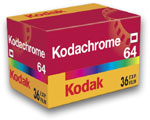
Since June 2009, when Kodak announced that they were ceasing to manufacture their legendary Kodachrome film, Kodachrome projects have been popping up left, right, and centre. Well, it’s hardly surprising: photographers have wanted to make the most of the last of the film that was first manufactured 75 years ago, and brought high-quality colour photography to the masses.
Shooting on film is all about making every shot count: you’ve only as many pictures as there are on your reel, and when they’re gone, they’re gone. And whilst so much of photography is reliant on being able to react quickly and capture a flicker in time, using film instills a particular type of patience in you. You wait for the right moment, there’s no instant feedback from your screen, and then you wait a little longer for the picture to be developed.
The Kodachrome projects are, therefore, all the more pertinent. When the Kodachrome is gone it has gone for good. So what’s out there for our delectation? I’ve been taking a poke about the intergoogles.
Kicking off things, we have The Kodachrome Project. It’s run by Dan Bayer and celebrates the life of, and life in, Kodachrome film. As he puts it, Kodachrome’s age rivals that of the average human and he believes that it has been the most influential colour film ever produced. He wants people to experience and learn from shooting on film before it’s too late. Go take a look.
At 64×64, you can see the images that Phil Coomes, a photojournalist who works for the BBC, has been taking. There’s one picture a day for 64 weeks, taken on Kodachrome 64, taken for the sake of taking pictures.
I’ve really enjoyed Pontus Wallsten’s A Year of Kodachrome. It has some wonderful flower shots, which really bring home the colour quality of Kodachrome.
Jeff Jacobson’s book The Last Roll was shot on Kodachrome as he was undergoing and recovering from chemotherapy. You can take a look at some of the pictures and listen to him speak about the genesis of his project here.
There aren’t yet any pictures available from Steve McCurry’s Kodachrome journey, which started in New York and ended in Parsons, Kansas—at Dwayne’s, the only lab still capable of processing Kodachrome film—via India, using the last roll of Kodachrome to come off the production line. The journey was documented by National Geographic and will doubtless be televised at some point, whilst the stills will be presented to George Eastman House. It’s one to keep an eye on.
Kodak has its own Kodachrome gallery on its website. The shot of the windsurfers left me salivating and that of the fishermen balancing on poles breathless. Take a look for yourself.
Of course, Flickr is hosting a small army of Kodachrome projects, too. Some of them a group pools, others are individuals documenting their final shots on the film. You can spend hours wandering amongst them.
There are countless Kodachrome projects that have brought together collections of pictures that span generations. Okay, so they might not be directly fulfiling the brief of making the most of a finite medium, but they are worth browsing. Start with In Celebration of Kodachrome, on photo.net.
Whatever you feel about Kodak ceasing production of the film, or even film itself, it has spawned some inspired and fervent picture-taking. Yes, I have been tempted to dig out my film camera and dust it off. I admit it.







